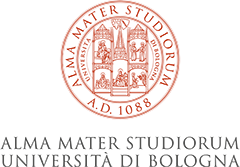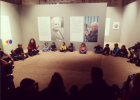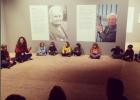Identification Plan
- Creativity education
- To experience the exhibition as a place where you feel welcomed and involved in participating actively
- Inclusion and Accessibility Education
- Education in the expression of thoughts and emotions and the use of the five senses, especially touch
Pedagogical Plan
Intellectual/Cognitive Aspects
Socio-relational Aspects
Aesthetic/emotional/linguistic Aspects
Methodological plan
This experience was based on storytelling, in order to present the figures of Maria Montessori and Bruno Munari. Interactive readings have also been used
The workshop "come ti pare" ("as you like it") included a visit to the exhibition "Touching beauty" and the workshop about the creation of a "come ti pare", i.e. a tactile book. The children were guided to discover pieces of works, materials and the artistic activity of Maria Montessori and Bruno Munari through the sense of touch. The exhibition "Touching beauty" was aimed at considering the touch from an aesthetic perspective. The question we asked the children before the visit was the following: Is it possible to recognize beauty even by touch?
The children touched materials, surfaces, works, objects and books with their eyes closed and open. These objects were placed on colored tables. The children let their faces be caressed by the tactile forest of Munari and entered the Montessori hall. Then, they went upstairs into the laboratory space
Stages of the Project
Initial phase
Welcome, presentations and first introduction to the figures of Maria Montessori and Bruno Munari. Ther children were in circle sitting on the ground
15 minutes
Interactive visit involving the operator and the children
Intermediate phase
Visit to the exhibition Touching Beauty (guided tour):
- The children stopped at the tables to interact with materials and works. They were accompanied to the Forme table with their eyes covered, so that they could touch the geometric solids with their eyes closed. Then, they moved on to the pink tower and the Useless Machines of Munari
- On the tables dedicated to the Leather of things and materials, the children were asked to touch the various surfaces of the tactile tables and then asked to focus on the different emotions they felt
- On the table called Alphabets and tactile narratives, the letters of Maria Montessori were presented and a book by Bruno Munari was read. Finally, the Tactile Messages for a blind little girl from Munari were touched
- The passage followed through two interactive environments: the Tactile Forest of Munari, where children were caressed by the "trees" and could contribute to their creation, and the Montessori classroom, where they could interact with the materials
30'
Interactive visit, with games and sensory experiences
Final phase
Laboratory and discussion. In the laboratory, the children created a "come ti pare" starting from a series of simple cardboard modules bound together. Finally, those who wanted to do that, told their mates what they had done. They came out passing through the tactile labyrinth
45'
Laboratory
- They have experienced the importance of the 5 senses, especially the touch, through practical experiences
- They have developed manual skills and creative thinking during the workshop
Collage
Cardboard, scissors, glue, adhesive tape, papers of various thickness, texture and texture, fabrics of various texture and surface, feathers, buttons, cork, wood, plastic, threads and ropes of various thickness and material
Each child has produced a tactile book














